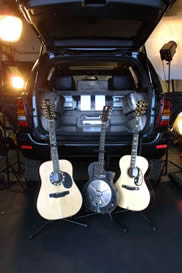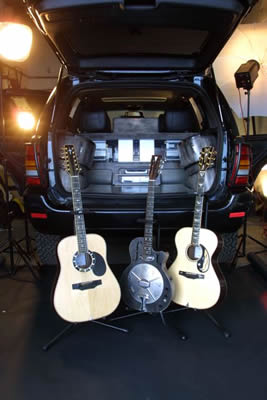The rear cabinet was coming on in leaps and bounds enabling us to start temporarily hooking up the system. The sub amps have their own cooling fans built in to keep everything cool. This is a great idea if it is on a thermostat. When we did a dry run before finishing the cabinet, we came across a design flaw in the amps. The fans come on as soon as the amp is activated and were really noisy. You could easily hear them with the volume at normal levels. The sensible thing to do would have been to fit a thermostat in the amp, so they only came on when the volume was cranked up and the amps were starting to get hot. Our cure was to disconnect the internal fans and to fit 4 large whisper fans on a thermostat in the cabinet. Whilst they run all the time at low speeds and speed up as the temperature rises, the 4 of them were a lot quieter (30 Db’s I believe) than the 2 tiny sub amp’s fans, also the whole cabinet is now kept nice and cool with all the amps benefiting from a suprisingly strong airflow. The air is drawn in at the bottom and is ducted out through the top sides of the cabinet exiting around the back of the Tom-Toms having passed through the cavity between the inner and outer rear body sides. The theory is that the colder outer skins of the cavity will draw the heat out of the air before dumping it back in the rear ready for the next lap. With hindsight we have probably gone over the top on the cooling front, but our instructions were that it would have to perform on trips down to the sunny “Med”, so although it is overkill for the UK, it has a huge safety margin for hotter climates.
With the cabinet pretty well sorted out, it was time to address the Subs Tom-Toms.
My idea was that we would get a Sycamore log and stick it on a lathe and turn it down accordingly. Alan then explained that it doesn’t work like that and that it would need to be made up from a number of staves that would be cut to shape and then glued together to form a crude barrel shape that could then be put on a lathe and turned down. After Alan had spent a few days shaping and planing a load of staves, he glued them together using giant Jubilee clamps to hold it together whilst they dried. The next obstacle was that the wood lathe couldn’t accommodate the barrels, they were to large in diameter for it. After a couple of hours in the metal workshop, we had a custom lathe that would accommodate them and Alan got stuck in. The noise these things made as they spun on the lathe has to be heard to be believed! It resembled a very loud, very violent, outbreak of wind until he had managed to get everything rounded off.
<< previous | 1 | 2 | 3 | 4 | 5 | 6 | 7 | 8 | 9 | 10 | next >>


